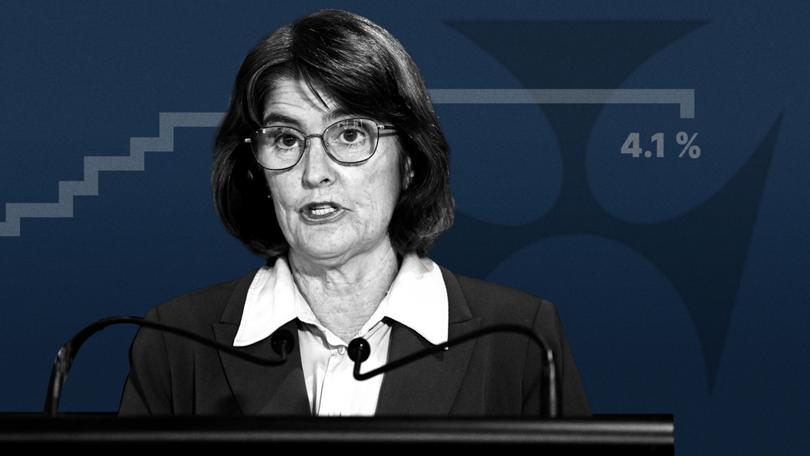RBA interest rates: Reserve Bank holds cash rate at 4.1 per cent

A cautious Reserve Bank has kept interest rates on hold, but declared it is ready to act as an escalating trade war sparks uncertainty about the future of the global economy.
Aussie borrowers were denied back to back mortgage relief in a consensus decision on Tuesday, with the cash rate steady at 4.1 per cent.
It followed a cut at the RBA’s February meeting, when the central bank had warned against expecting an immediate second dose.
Sign up to The Nightly's newsletters.
Get the first look at the digital newspaper, curated daily stories and breaking headlines delivered to your inbox.
By continuing you agree to our Terms and Privacy Policy.The RBA’s decision came despite signs inflation is heading back into the target zone of 2 to 3 per cent — and the board said it was “cautious” about the outlook.
Chaos from a growing trade war looms large, with the US Government planning to reveal its next salvo of tax hikes on Thursday Australian time.
But the RBA said it was “well placed to respond to international developments”.
Governor Michele Bullock said the uncertainty overseas would lead to slower growth. The bank would need to keep an eye on the inflation impact, which was unclear, she said.
“A trade war with escalating tariffs and reciprocal tariffs is going to slow down growth in world trade,” Ms Bullock said.
“Australia as a small open economy has benefited massively from open trade.
“It’s not good for us, a world trading system that is fragmenting.”
Countries which hit back with tariffs of their own would likely face higher inflation and lower productivity as they push their economies into less competitive sectors.
“Longer run, the sorts of impacts this has (are) going to be quite dramatic,” she said.
It’s yet to be seen exactly what policies the US will settle on and how other countries respond.
China’s moves will be key for Australia because it is the top destination for Aussie exports.
Yet Ms Bullock was talking up the bank’s ability to respond.
“We are well positioned for any shocks that may come our way,” she said.
Inflation was falling, unemployment was low and the RBA had more room to move than it did in 2020 because interest rates are higher, Ms Bullock said.
Buried beneath the trade debate was a signal that the board was also “cautious” about the outlook for prices, even as recent monthly data suggested core inflation was back within the target band.
“The board needs to be confident that this progress will continue,” it said in the statement.
Moody’s Analytics associate economist Shannon Nicoll said “it was no big surprise” that the RBA held rates.
“The board’s language was more moderate and balanced, but uncertainty remains the name of the game,” Mr Nicoll said.
Investment bank UBS considered the bank’s statement dovish — soft on inflation — while ANZ said the RBA was keeping its options open.
Markets had judged the chance of a cut today to be just 10 per cent. A move by July is considered very likely, however.
eToro analyst Josh Gilbert said the RBA’s May meeting would be “a big one”.
“By that time, the potential fallout from tariffs will be more apparent, the election will have concluded, and most importantly, the RBA will have received quarterly inflation data due at the end of this month.”
The decision was the first by the central bank’s new monetary policy board after a big shake-up to governance structure passed through parliament last year.
